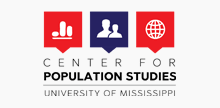Abstract
Ordinary least squares regression is often used in education policy research. Unfortunately, OLS regression coefficients may mislead. In OLS models, the coefficients express the conditional mean relations among the variables. Still, what if this estimate of central tendency in the conditional distribution fails to convey important information about the distribution? Quantile regression is a statistical technique that allows variation in the conditional distribution to be examined. Therefore, it can be used to check the validity and applicable range of OLS coefficients. Following the method of Koenker and Hallock (2001), we compare OLS and quantile regression results, examining variables related to eighth-grade math achievement (NELS:88 database, N = 20,763). The independent variables include school, student, and family characteristics that are staples of education policy research. Our graphically-displayed findings reveal striking disparities between the OLS and quantile regression coefficients. We propose that policymakers could be led astray by the simple aggregations achieved by OLS regression to choose “one size fits all” interventions. Moreover, our empirical results suggest that the received wisdom of education policy research may have to be revised because of the new findings that the quantile regression approach will produce.
Recommended Citation
Reeves, Edward, and Jesse Lowe. 2009. "Quantile Regression: An Education Policy Research Tool." Journal of Rural Social Sciences, 24(1): Article 10. Available at: https://egrove.olemiss.edu/jrss/vol24/iss1/10
Publication Date
4-30-2009



